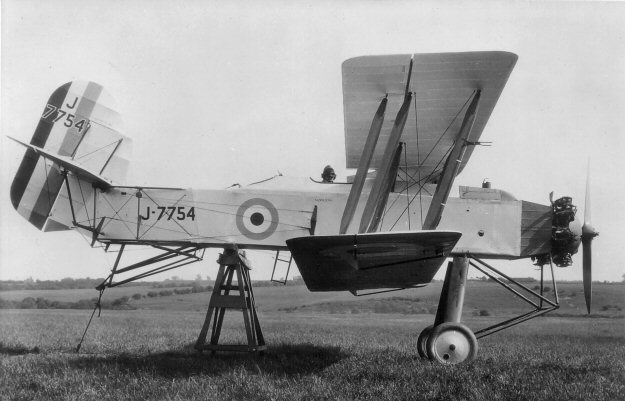Armstrong Whitworth Ape J7754
(c/n 145)

In the 1920s the Royal Aeronautical Establishment
(RAE) commissioned a spec for an 'infinitely
adjustable' aeroplane which,
by adding and subtracting bits and pieces would provide answers to
various aerodynamic
problems. Armstrong Whitworth came up with the oddly named "Ape".
"Jigsaw Puzzle" might have
been more apt. The equal chord, untapered box-like fuselage could
be made longer by adding
sections. Various sizes of rudder and tailplanes could be
fitted. The
latter was mounted on a
pivot at the rear of the fuselage. The angle of incidence could
be altered
during flight (although hopefully
not as far as the inclination in this photograph shows on the ground).
By varying the length and rake of various struts the wing position,
stagger, gap and dihedral could
be varied. Well,
you get the idea. Pretty advanced stuff.
Three prototypes were built, although
by the time one crashed
landed at Farnborough in 1929 the glamour had worn off and the project
was cancelled.
